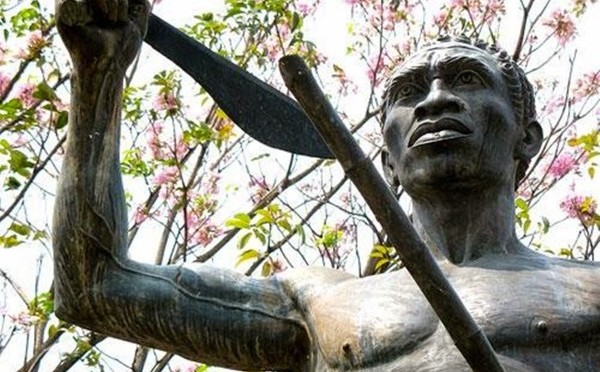Background
There is very little known about the revolutionary Gaspar Yanga. From the available historic records, Yanga is said to have been a royal from the Bran, people in the country that would go on to be Gabon. Yanga was enslaved in New Spain or Mexico but he managed to free himself from bondage to create one the first free towns for Black people in all of the Americas after the start of the Atlantic Slave Trade.

Mexico Had a Large Population 0f Enslaved Africans
New Spain or modern day Mexico was home to some of the worst slavery in Latin America. Many scholars believe the colony had the second-highest number of enslaved Africans after Brazil and developed the largest free Black population in the Americas after slavery was abolished.
“A 1646 census enumerated 35,089 Africans and 116,529 persons of African descent in New Spain. With cessation of the slave trade, the enslaved population of New Spain steadily declined,” according to scholar of the African diaspora Herman L. Bennett.

The Establishment of a Free Black Society in Veracruz
In 1570, Yanga freed himself from slavery and helped other enslaved Blacks to escape to the highlands near Veracruz, to create a free society there. The terrain and geographical position offered natural protection for the colony for 30 years, until the Spanish slave masters embarked on a campaign to bring the territory under its control. According the Wall Street Journal, the township still exists today, and in 1932, it was renamed Yanga in his honor.

The 1609 Attack
Yanga was allies with a former enslaved Black man from Angola named Francisco de la Matosa who also led a group of freed enslaved people. The two decided to work together to defend against Spanish aggression. Yanga sent peace terms to the Spanish promising to cease raids and helping other Africans escape slavery in return for autonomy. The Spanish rejected his terms and in 1609, they invaded the area with 500 men carrying firearms. Being too old by then to physically join the fight, Yanga had Matosa lead the charge of 100 freedom fighters armed with firearms, and about 400 more carrying machetes, bows and arrows, rocks and other crude weapons. Although the maroons were out-gunned, they knew the land and used the terrain to out maneuver and cause significant casualties to the Spanish.

Aftermath of the 1609 Attack
The 1609 battle ended with no clear victor. The Spanish managed to burn down the town, but was unsuccessful in subduing the maroons who alluded them in the surrounding areas and later continued raids and helping escaped slaves. After two years, the Spanish were forced to sit down with Yanga to negotiate peace terms. The treaty was signed on Oct 3, 1618 and the San Lorenzo de los Negros de Cerralvo was establish as an autonomous region for free Blacks. The town remained mostly undisturbed up until modern times when it was renamed Yanga.

Yanga’s Legacy
In 1871, Mexico City Mayor, writer and historian Vicente Riva Palacio proclaimed Yanga a “national hero of Mexico” and El Primer Libertador de las Americas or first American liberator. The town is now composed of some 22,000 mixed or mestizo people who hold a yearly carnival held every Aug. 10 that celebrates Yanga’s victorious revolution. There is also a statue which was erected in the 1970s that commemorates Yanga’s victory.
source: atlantablackstar.com by
